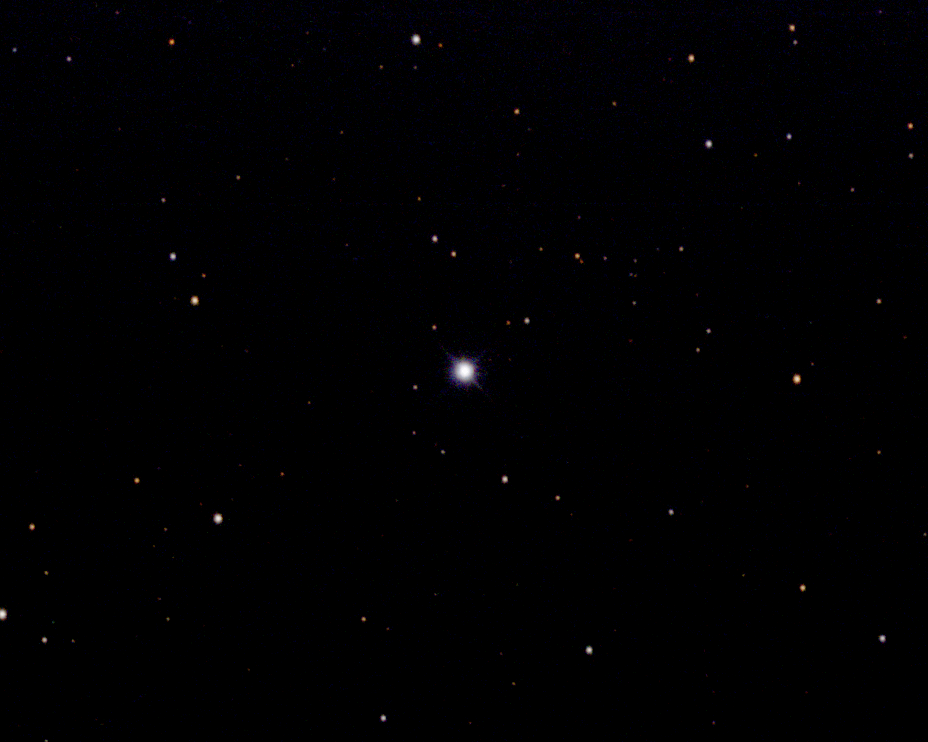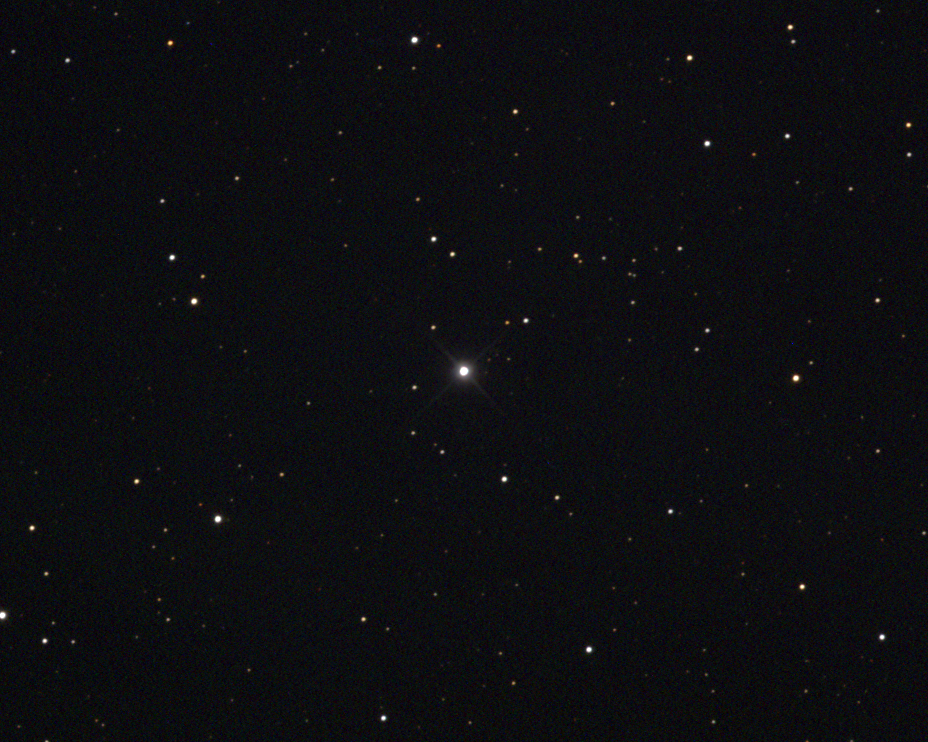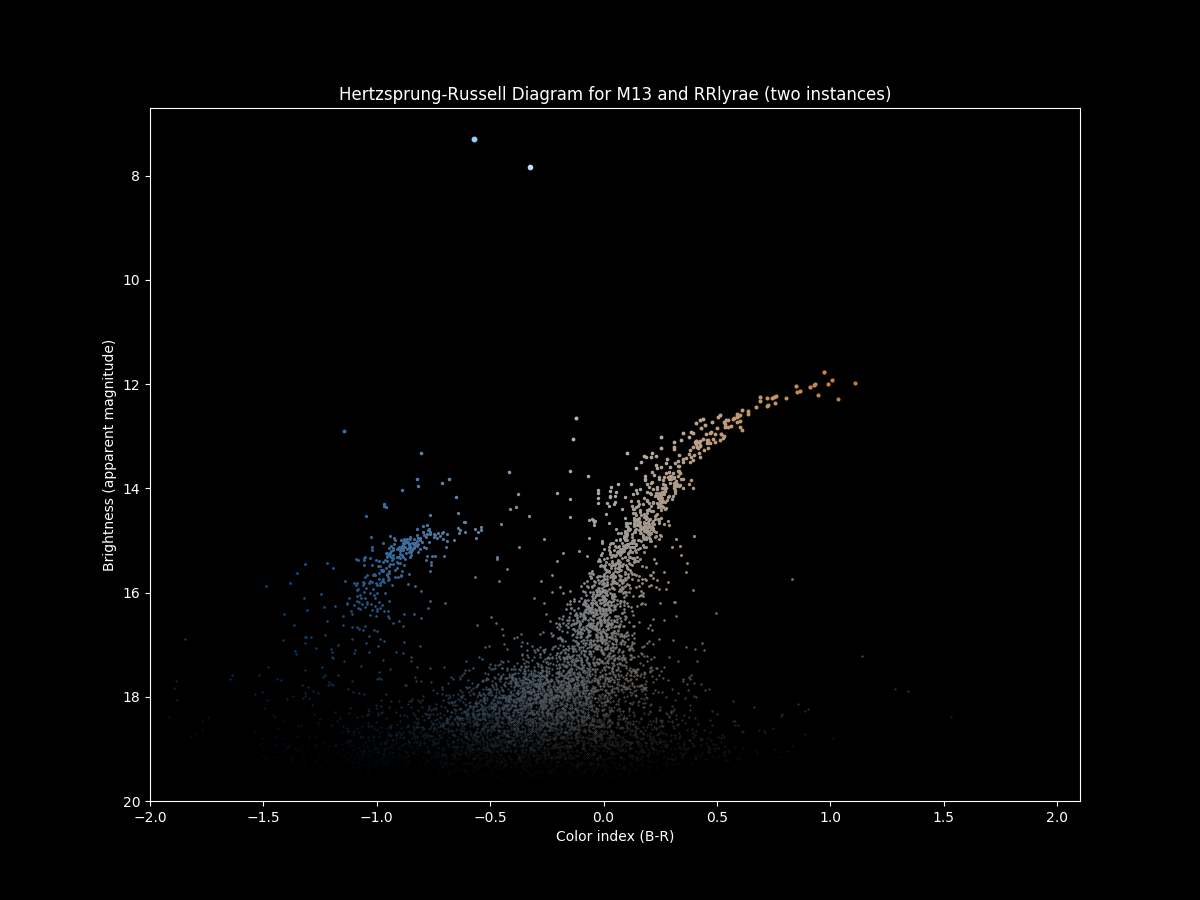RR Lyrae --- Variable Star
From the author of Sizing Up The Universe

21:07 EDT, August 8, 2017
21:07 EDT, August 9, 2017
Starlight Express Trius SX-694 on 10" RC at f/9
R = 1 min, G = 1 min, B = 1 min (in 1 sec unguided increments)
No flats or darks.
Log stretch.

23:09 EDT, August 8, 2017
Starlight Express Trius SX-694 on 10" RC at f/9
R = 1 min, G = 1 min, B = 1 min (in 10 sec unguided increments)
No flats or darks.
Log stretch.
Given that the absolute magnitude and distance to RR Lyrae are known, we can overlay images of RR Lyrae on images of globular clusters to estimate the distance to the cluster.
Shown below is an HR diagram for M13 overlayed with two images of RR Lyrae.
The two data points brighter than magnitude 8 are the two instances of RR
Lyrae.
The RR Lyrae type variable stars in M13 sit on the so-called horizontal
branch of the HR diagram.
As we can see, the RR Lyrae type variable stars in M13 are about 7 magnitudes
fainter than RR Lyrae itself (more precisely, it's about 6.8 magnitudes).
From this magnitude difference, we can estimate how much further away M13 is
than RR Lyrae: \(\sf \small \sqrt{10^{\; 6.8 \; / \; 2.5}} = 23 \).
Finally, given that RR Lyrae is 860 lightyears away, we get that M13 is about
\(\sf \small 23 \times 860 = \) 20,000 lightyears away. This is not far from
the correct answer of 22,200 lightyears.

A similar analysis of M15 gives us a distance estimate of
\(\sf \small \sqrt{10^{\; 9 \; / \; 2.5}} \times 860 \approx \) 50,000 lightyears.
The correct answer is 33,000.
